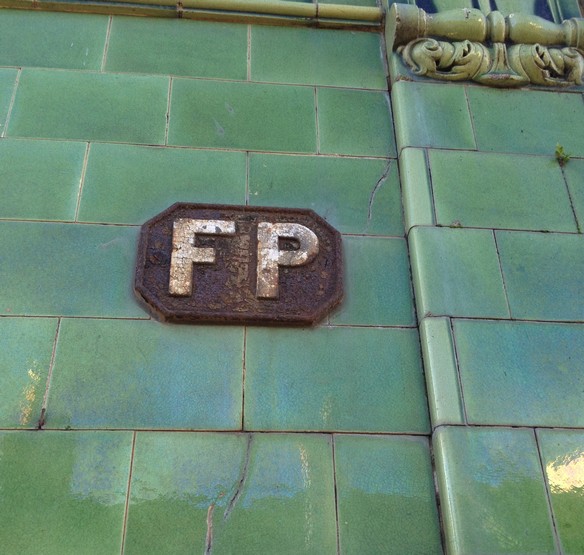This FP sign on the wall of one of my local buildings is another archaeological piece of street furniture. It’s like the bootscrapers that would have not merited a glance one hundred years ago, as being so ubiquitous. Now, FP signs are rare survivors of a once common vocabulary. Foot Path? Fixed Point? Floating Point? No.
FP stands for Fire Plug (or sometimes Fire Point). Before we had modern fire hydrants, the fire brigade volunteers, in the event of a blaze, would dig down to the water main and bore a hole in it. The gap would fill with water, creating a temporary well, that they could use to fight the fire. At first with buckets passed from hand to hand, and then with pumps.
Once the fire was out, the brigade would hammer a bung or “plug” into the mains pipe and backfill the hole. They left an FP mark on a nearby building for future reference, should they need to fight another fire in the vicinity and quickly access the water again.
The FP signs are not the same as fire insurance marks. These are metal plates marked with the emblem of an insurance company and, usually, a policy number on them. Happy insured property owners attached these to the front of their buildings to let passers-by know, in the event of a fire, which insurance company’s fire brigade they should call upon. It is a matter of sober reflection that, in the 19th century, all fire fighting in the United Kingdom happened only through the efforts of voluntary bodies, parish authorities or insurance companies.
Yes, you relied on goodwill rather than civic duty in the event of a conflagration. There was no 999. Or telephones, for that matter.
Later FP signs gave figures for distance (in feet) to the permanently installed fire hydrant in the mains and inches (pipe diameter) of that mains. Fire crews could then attach a hose to the hydrant for fighting fires.
My local FP just seems happy to announce itself. Get out the spades and the buckets, everyone, in the event of disaster.




Frightening to think of a world with voluntary fire brigades. Then again, the lifeboats are all crewed by volunteers.
LikeLike
Never was sure what those signs meant!
LikeLike